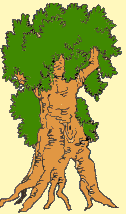MOMORDICA CHARANTIA
MOMORDICA CHARANTIA
MOMORDICA CHARANTIA
French: The bitter melon
Wolof: Mbarbof GOUN: Soclikan.
Family: Cucurbitaceae
Momordica charantia is a tropical and subtropical liana of the Cucurbitaceae family, widely cultivated with edible fruits, which is among the most bitter of all vegetables.
The original focus of the species is not known, other than that it is native to the tropics. It is widely cultivated in South and Southeast Asia, China, Africa, and the Caribbean.
It bears alternate leaves 4 to 12 cm in diameter, with 3 to 7 deeply separated lobes. Each plant bears distinct yellow male and female flowers The fruit has a distinct warty and oblong shape.
It is hollow in the section, with a relatively thin layer with flesh surrounding a central cavity filled with seeds of large flat seeds and pith. The seeds and pith appear white in ripe fruits. The fruit is most often eaten Although it can also be eaten when it has started to ripen and turn yellowish, it becomes more bitter as the fruit ripens.
The Bitter melon comes from a diverse variety. The Chinese phenotype is 20 to 30 cm long, with a downright slender oblong shape. It is pale green in color and slightly wavy, with a rough surface. The more typical Indian bitter melon has a narrower shape with pointed ends, and a jagged, triangular covered surface. The coloring is green or white. Between these two extremes lie a number of intermediate forms. Some bear miniature fruits only 6-10 cm long, which can be served individually like stuffed vegetables. These miniature fruits are very popular in South Asia as well as India.
Bitter melon contains a compound called bitter momordicin that is said to have a stomachic effect.
Add a comment























